#Dorziat
Explore tagged Tumblr posts
Text
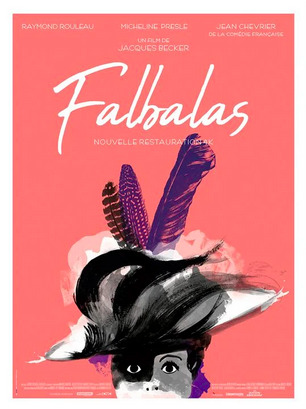
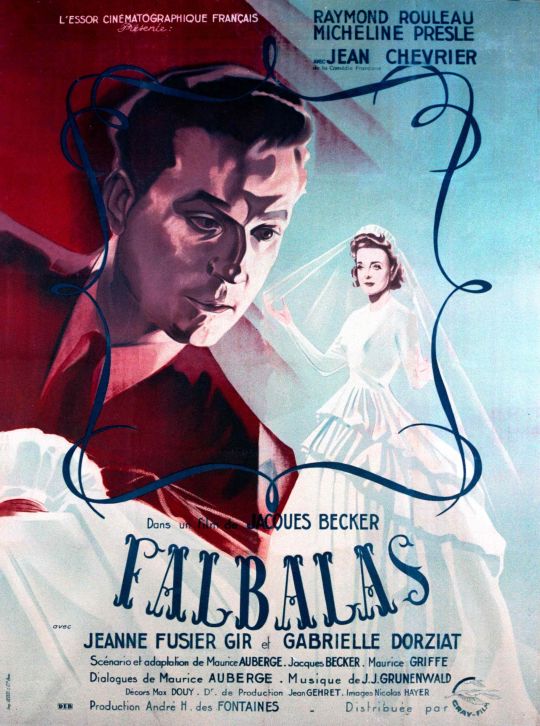

"Falbalas" de Jacques Becker (1945) avec Raymond Rouleau, Micheline Presle, Jean Chevrier, Gabrielle Dorziat, Françoise Lugagne, Jeanne Fusier-Gir et Christiane Barry, décembre 2023.
Avec des costumes de Marcel Rochas... le film qui inspira le créateur Jean-Paul Gaultier enfant ^^)
#films#FilmsArtistes#Paris#style#chapeau#spirit#hommage#Rochas#Gaultier#Becker#Presle#Rouleau#Chevrier#Dorziat#Lugagne#FusierGir#Barry
0 notes
Text

L'Art et la mode, no. 12, vol. 33, 23 mars 1912, Paris. Mlle G. Dorziat dans "Bel Ami" au Vaudeville. — Déshabillé de mousseline de soie rose. Paletot de dentelle bordé d'hermine et frangé au bas. Imp. L. Lafontaine, Paris. Bibliothèque nationale de France
#L'Art et la mode#20th century#1910s#1912#on this day#March 23#periodical#fashion#fashion plate#color#bibliothèque nationale de france#dress#theatre#Mademoiselle G. Dorziat#march color plates
18 notes
·
View notes
Text
Fashion in 1914 -
1915 (first exhibited) Rose, née Boote, Fourth Marchioness of Headfort by Sir William Orpen (auctioned by Sotheby's) slightly increased exposure 1244X1675.
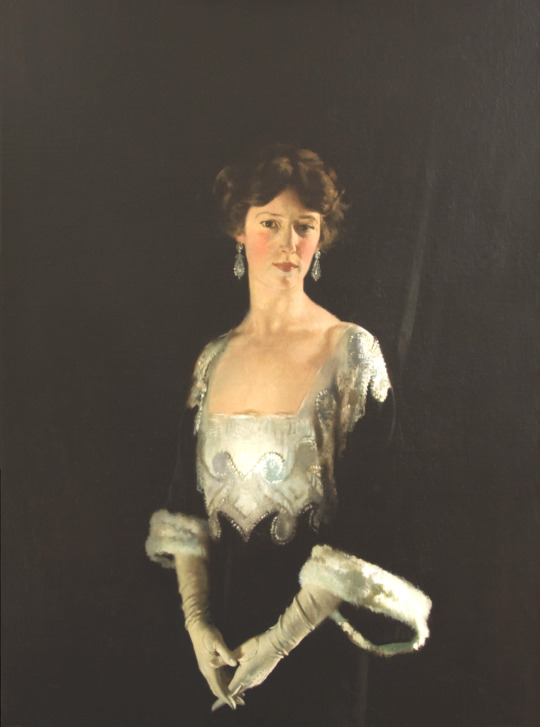
Left 1914 (July) Another ensemble by Jenny, Les Modes - photo by Félix. From les-modes.tumblr.com/page/18; fixed spots w Pshop 725X1920.
Center 1914 (July) Ensemble by Jenny, Les Modes - photo by Félix. From les-modes.tumblr.com/page/18 696X1920.
Right 1914 (June) Evening gown by Lucile from Les Modes From les-modes.tumblr.com/post/52480680436/evening-gown-by-lucile-les-modes-june-1914; fixed spots & flaws w Pshop 1109X1920.


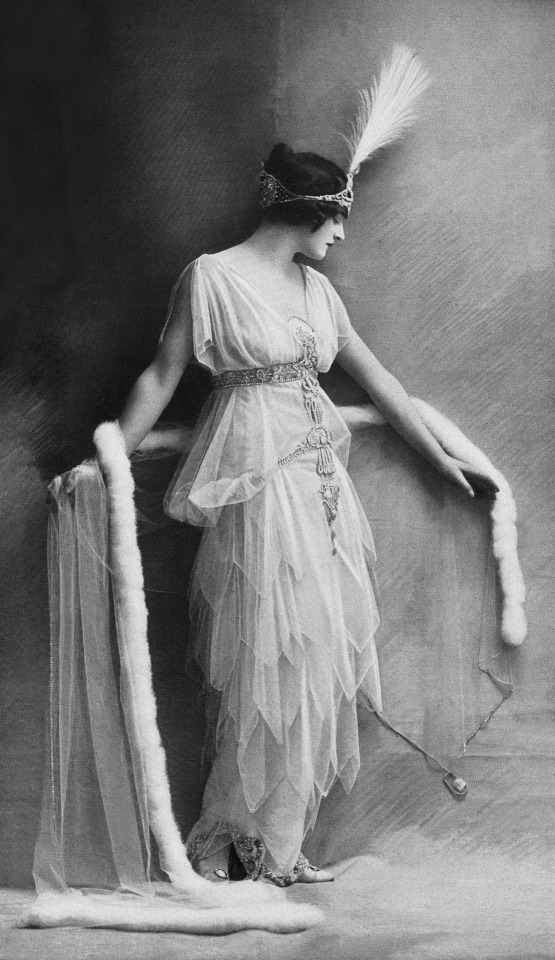
1914 Doña Ascensión Reynoso Mateo by Enrique Dorda Rodriguez (private collection). From history-of-fashion.tumblr.com/image/125539729854; fixed bigger spots w Pshop 861X1308.
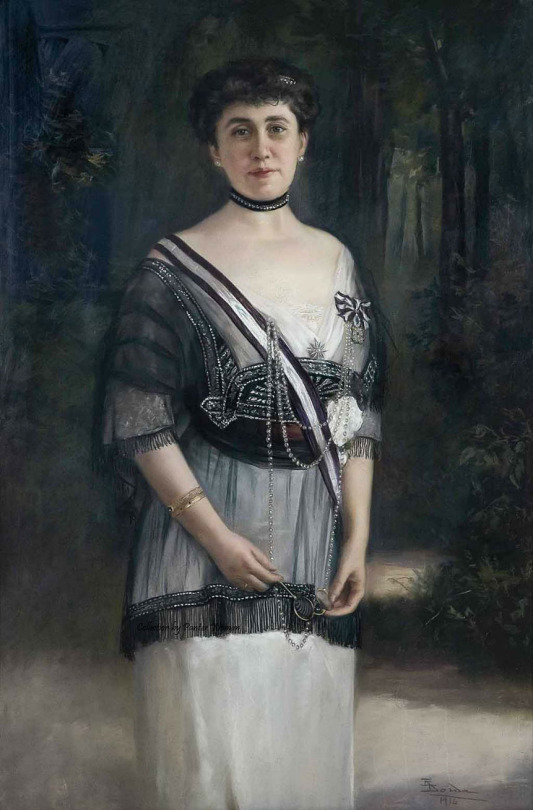
Left 1914 dress for the races. From messynessychic.com/2018/04/27/lovely-ladies-in-lace-at-the-paris-races; removed print with Photoshop and cropped 857X1242.
Right 1914 Les toilettes à Longchamp with umbrellas (Bibliothèque nationale de France - Paris, France). From their Gallica collection 820X1178
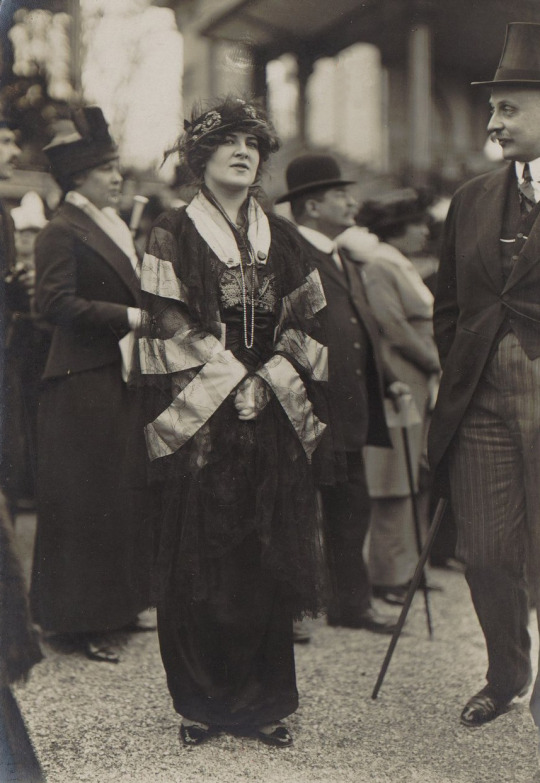
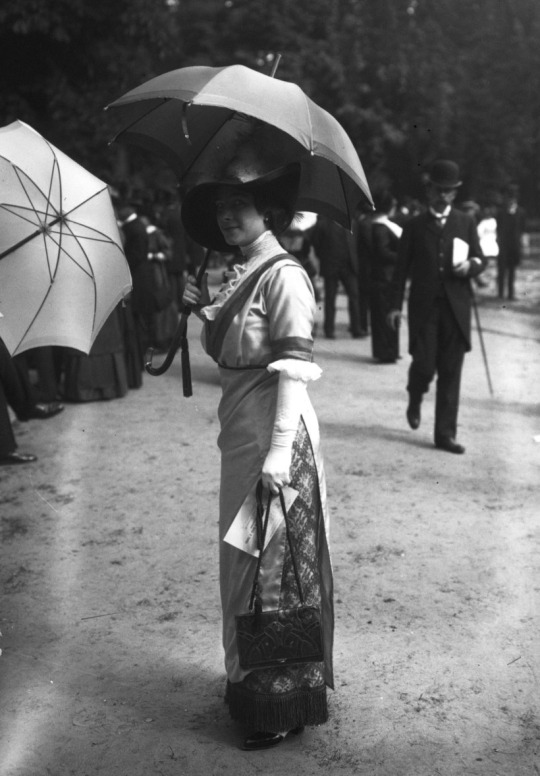
1914 Duquesa Sofia de Hohenberg by C. Kofel. From Wikimedia; fixed spots w Pshp 933X1483.Her assassination along with her husband Archduke Ferdinand's in Sarajevo triggered World War 1.
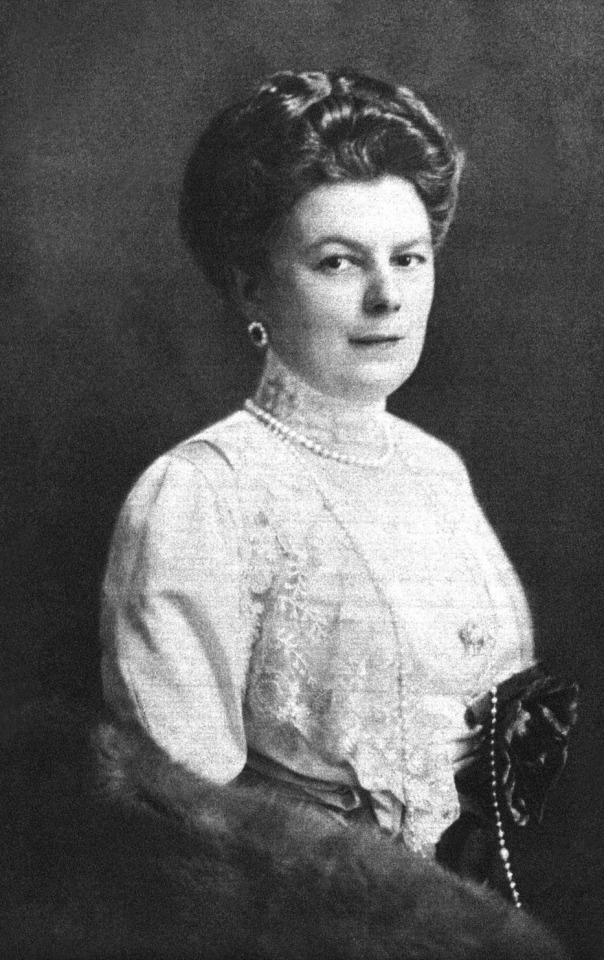
1914 Gazette du Bon Ton "Le Choix Difficile Manteau du soir de Worth" by Boutet-DeMonvel artophile.com 750X1096.
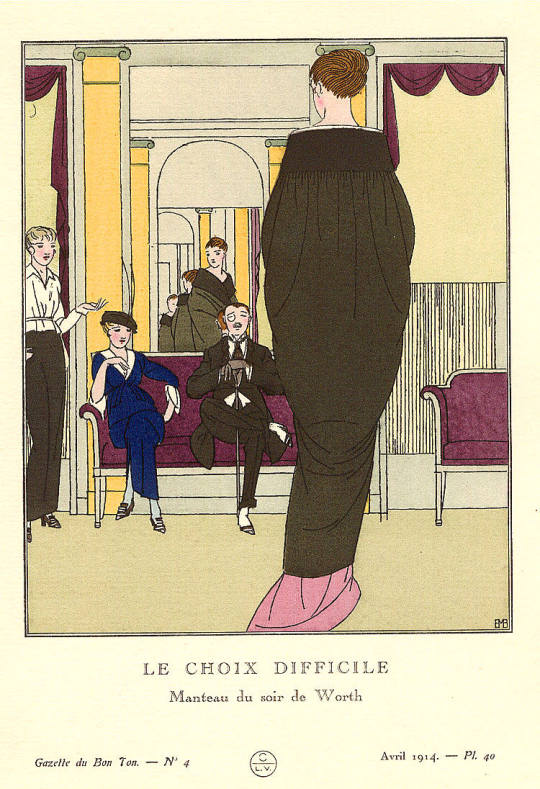
1914 La Inglesa by Ramón Casas (auctioned by Sotheby's). From their Web site 692X1983.
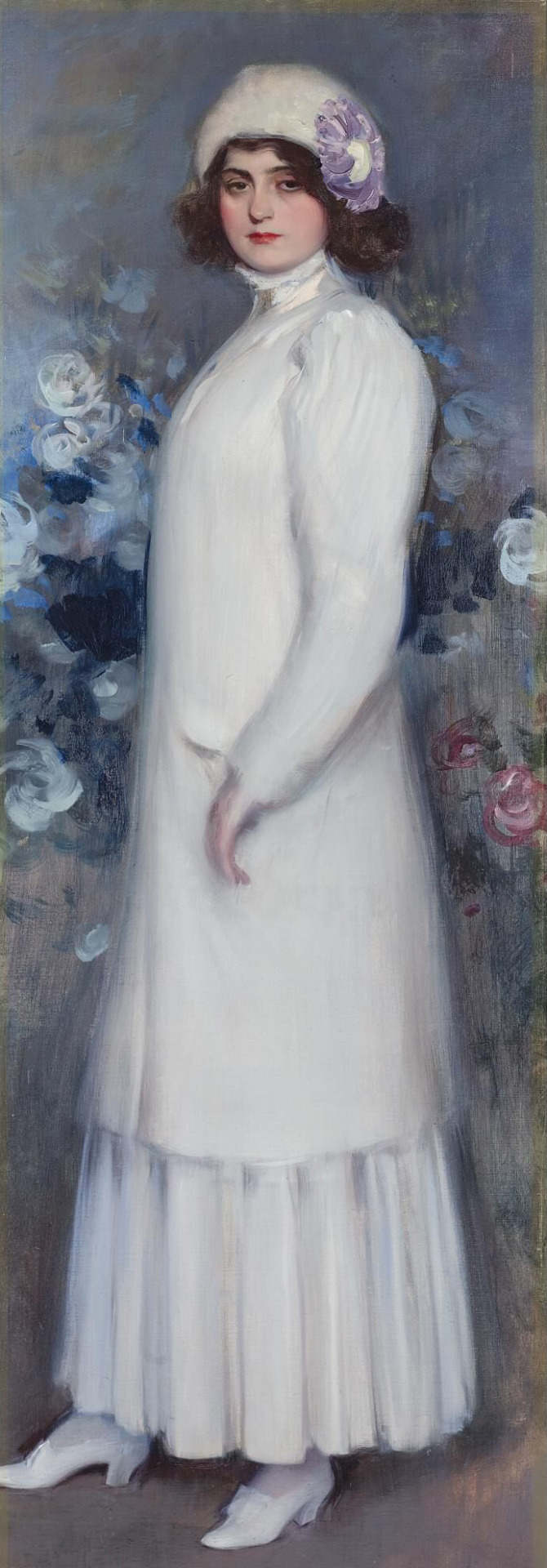
Left 1914 Longchamp, modes aux courses (Bibliothèque nationale de France - Paris, France). From their Gallica collection; removed spots and fixed upper edge with Photoshop 834X1261.
Right 1914 Longchamp, modes aux courses small hat and blouson bodice (Bibliothèque nationale de France - Paris, France). From their Gallica collection; removed spots with Photoshop 787X1287.

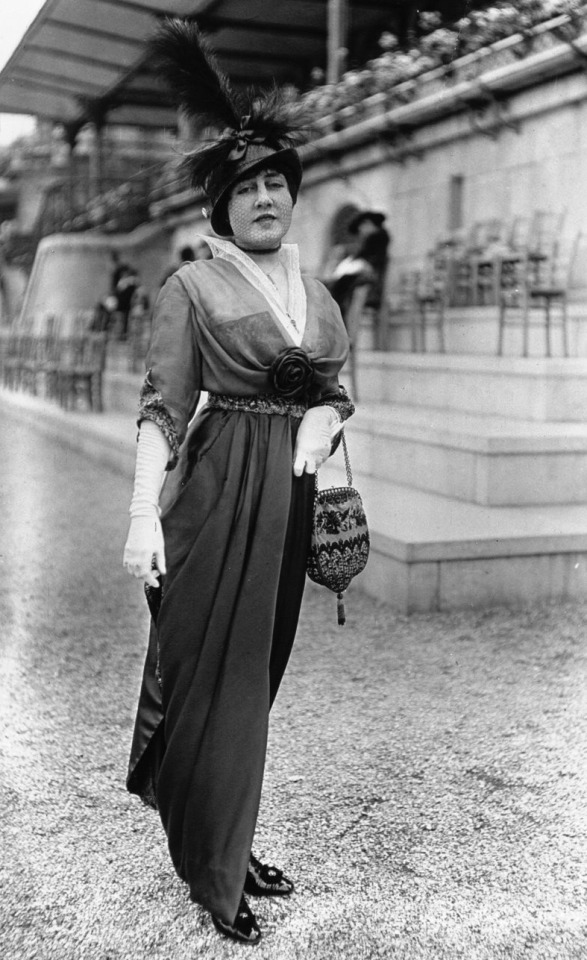
1914 Mlle. Gabrielle Dorziat by Robert Sauber (location ?). From jeannepompadour.tumblr.com/post/120549819170/mlle-gabrielle-dorziat-by-robert-sauber-1914 via pinterest.com/tailleboisfabienne00/peintures/ 1053X1920.

Left 1914 Mode à Longchamp (Bibliothèque nationale de France - Paris, France). From their Gallica collection 821X1201.
Right 1914 Modes du Derby à Chantilly (Bibliothèque nationale de France - Paris, France). From their Gallica collection; removed spots and flaws with Photoshop 936X1181.


Left 1914 Parisian fashion of the end of the Belle Époque 0. From yadi.sk/a/bVdkli-N3ZRDZc 819X1191.
Right 1914 Parisian fashion of the end of the Belle Époque 1 (1). From yadi.sk/a/bVdkli-N3ZRDZc 825X1181.
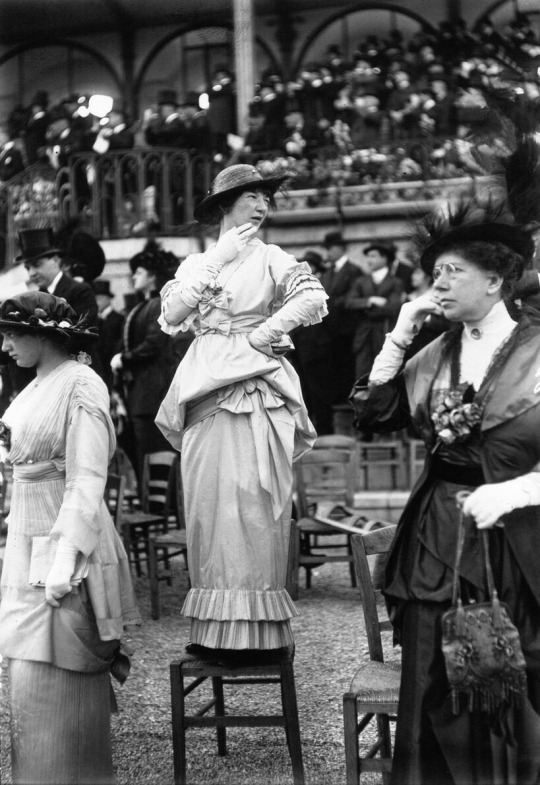
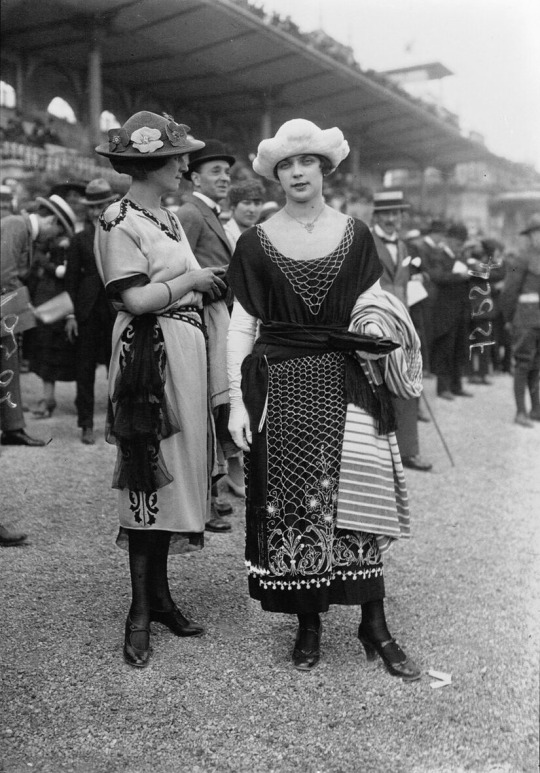
1914 Parisian fashion of the end of the Belle Époque 1 (8). From yadi.sk/a/bVdkli-N3ZRDZc 1096X847.

Left 1914 Les Modes Art Nouveau style Robe du Soir by Baron Christoff von Drecoll. From tumblr.com/mote-historie/732354780761079808/robe-du-soir-par-drecoll-les-modes-paris-1914?source=share&.
Center 1914 (August issue) La Gazette du Bon Ton L'Arbre de Science (The Tree of Science), Robe du Soir de Georges Doeuillet by George Barbier. From tumblr.com/mote-historie/730912140703268864/george-barbier-larbre-de-science-robe-du-soir?source=share&.
Right 1914 1914 La Femme Chic à Paris by Souchel. From tumblr.com/fashionsfromthepast/744198373624725504? 1802X2381.
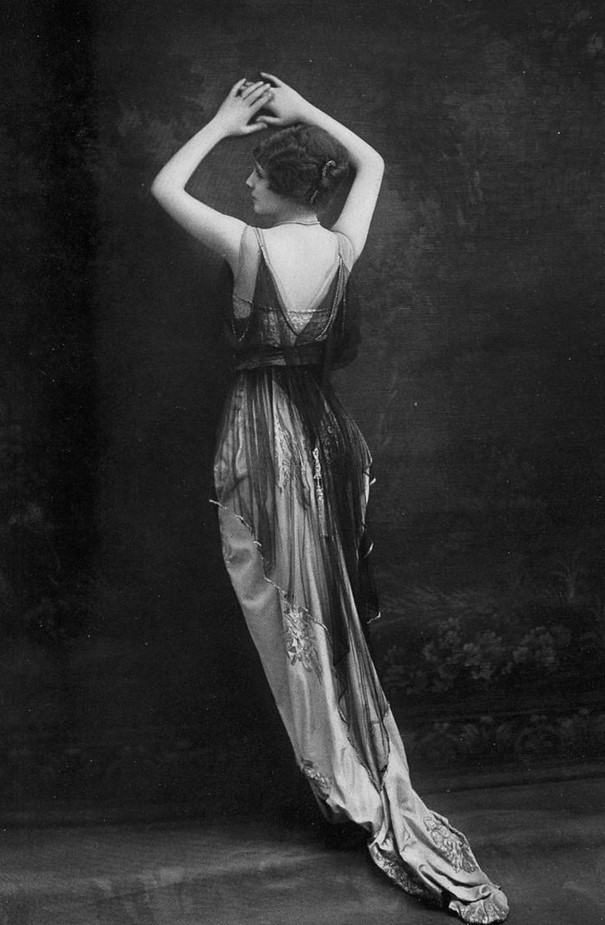
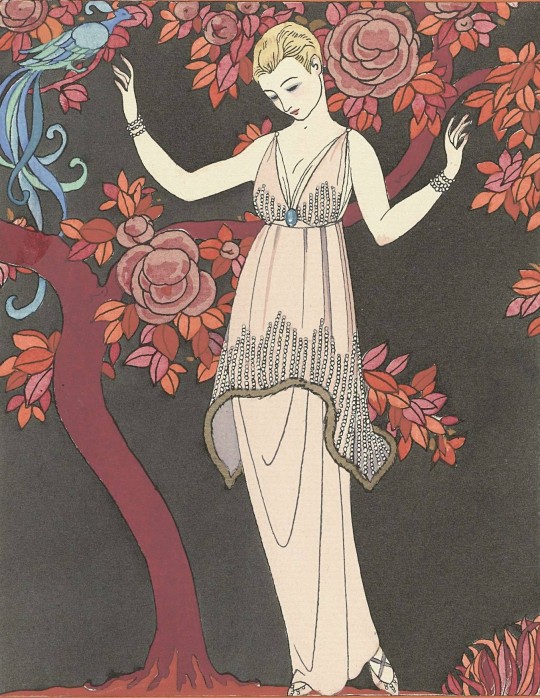
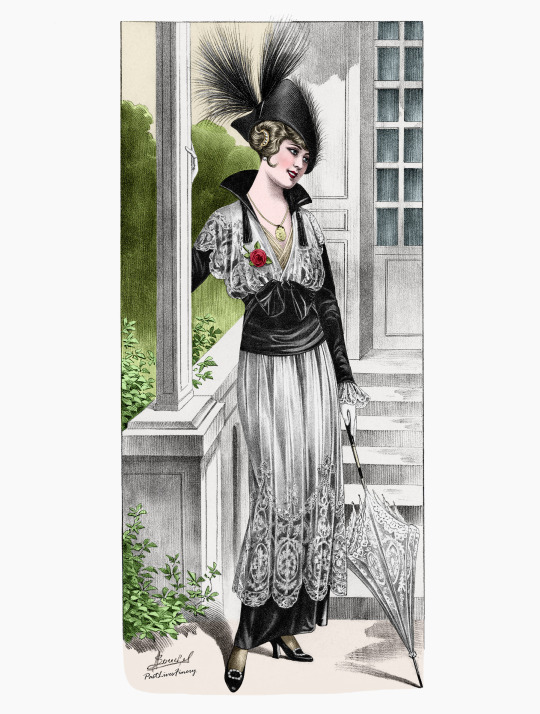
Left 1914 Parisian fashion of the end of the Belle Époque 1 (1). From yadi.sk/a/bVdkli-N3ZRDZc 825X1181.
Right 1914 Parisian fashion of the end of the Belle Époque 1 (26). From yadi.sk/a/bVdkli-N3ZRDZc 679X1025.
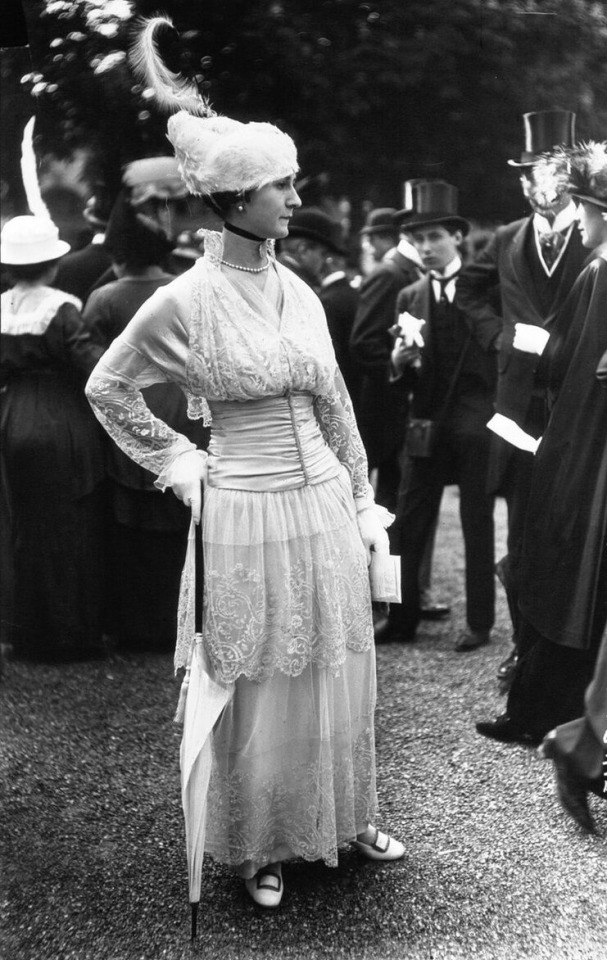

1914 (January issue) Femina illustration by Georges Lepape. From tumblr.com/mote-historie/731824161202307072/georges-lepape-fantasie-sur-fantaisies-la?source=share& 1158X659. A satirical opinion of Poiret Sorbet style?
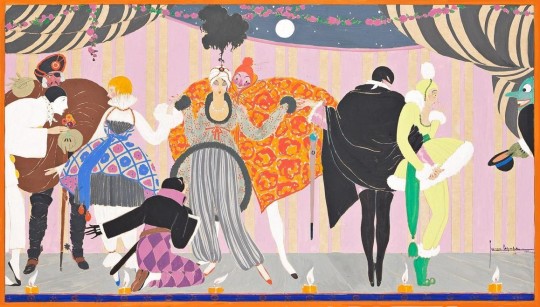
#1914 fashion#Belle Époque fashion#Edwardian fashion#dress for the races#Rose Boote#Ascensión Reynoso Mateo#Gabrielle Dorziat#Sophie von Hohenberg#Drecoll#evening dress#Doeuillet#Barbier#Lepape#Poiret
46 notes
·
View notes
Text
Novembre MMXXIII "November Who"
Films
Dr. Who and the Daleks (1965) de Gordon Flemyng avec Peter Cushing, Roy Castle, Jennie Linden, Roberta Tovey, Barrie Ingham, Michael Coles et Yvonne Antrobus
Ripoux contre ripoux (1990) de Claude Zidi avec Philippe Noiret, Thierry Lhermitte, Guy Marchand, Jean-Pierre Castaldi, Grace de Capitani, Line Renaud, Michel Aumont et Jean Benguigui
Coup de foudre et Conséquences (Fools Rush In) (1997) d'Andy Tennant avec Matthew Perry, Salma Hayek, Jon Tenney, Carlos Gómez, Tomás Milián, Siobhan Fallon et John Bennett Perry
Au-delà des grilles (Le mura di Malapaga) (1949) de René Clément avec Jean Gabin, Isa Miranda, Véra Talchi, Andrea Checchi, Robert Dalban et Ave Ninchi
Clemenceau, la force d'aimer (2023) de Lorraine Lévy avec Pierre Arditi, Emilie Caen, Elizabeth Bourgine, François Marthouret, Serge Riaboukine et Arthur Choisnet
L'Argent des autres (1978) de Christian de Chalonge avec Jean-Louis Trintignant, Catherine Deneuve, Laura et Michèle Kornbluh, Claude Brasseur, Michel Serrault, Gérard Séty et Jean Leuvrais
Mort sur la piste (2023) de Philippe Dajoux avec Jason Priestley, Eléonore Bernheim, Olivier Marchal, Roby Schinasi, Adèle Galloy et Olivia Courbis
Sylvia Scarlett (1935) de George Cukor avec Katharine Hepburn, Cary Grant, Brian Aherne, Edmund Gwenn, Nathalie Paley et Dennie Moore
La Cité sous la mer (City Beneath the Sea) (1953) de Budd Boetticher avec Robert Ryan, Mala Powers, Anthony Quinn, Suzan Ball, George Mathews, Karel Stepanek, Hilo Hattie et Lalo Rios
Second Tour (2023) de Albert Dupontel avec Cécile de France, Albert Dupontel, Nicolas Marié, Scali Delpeyrat, Jackie Berroyer, Christiane Millet, Philippe Uchan, Renaud Van Ruymbeke et Bouli Lanners
Seuls les anges ont des ailes (Only Angels Have Wings) (1939) de Howard Hawks avec Cary Grant, Jean Arthur, Richard Barthelmess, Rita Hayworth, Thomas Mitchell, Allyn Joslyn, Sig Ruman et Victor Kilian
Un pyjama pour deux (Lover Come Back) (1961) de Delbert Mann avec Rock Hudson, Doris Day, Tony Randall, Edie Adams, Jack Oakie, Jack Kruschen, Ann B. Davis : Millie et Joe Flynn
Le Couteau dans la plaie (1962) d'Anatole Litvak avec Sophia Loren, Anthony Perkins, Gig Young, Jean-Pierre Aumont, Régine, Yolande Turner, Tommy Norden, Mathilde Casadesus et Elina Labourdette
Garde à vue (1981) de Claude Miller avec Lino Ventura, Michel Serrault, Romy Schneider, Guy Marchand, Pierre Maguelon, Jean-Claude Penchenat et Elsa Lunghini
La Sanction (The Eiger Sanction) (1975) de Clint Eastwood avec Clint Eastwood, George Kennedy, Vonetta McGee, Jack Cassidy, Heidi Brühl, Thayer David, Reiner Schöne, Michael Grimm et Jean-Pierre Bernard
Deux Hommes dans la ville (1973) de José Giovanni avec Jean Gabin, Alain Delon, Michel Bouquet, Mimsy Farmer, Victor Lanoux, Ilaria Occhini, Guido Alberti, Cécile Vassort, Bernard Giraudeau et Christine Fabréga
JFK (1991) de Oliver Stone avec Kevin Costner, Tommy Lee Jones, Gary Oldman, Kevin Bacon, Laurie Metcalf, Jay O. Sanders, Michael Rooker, Sissy Spacek, Joe Pesci et Jack Lemmon
Le Juge et l'Assassin (1976) de Bertrand Tavernier avec Michel Galabru, Philippe Noiret, Isabelle Huppert, Jean-Claude Brialy, Renée Faure, Cécile Vassort, Yves Robert, Jean-Roger Caussimon et Jean Bretonnière
Le Fugitif (The Fugitive) (1993) d'Andrew Davis avec Harrison Ford, Tommy Lee Jones, Sela Ward, Julianne Moore, Joe Pantoliano, Andreas Katsulas, Jeroen Krabbé et L. Scott Caldwell
Un singe en hiver (1962) de Henri Verneuil avec Jean Gabin, Jean-Paul Belmondo, Suzanne Flon : Suzanne Quentin, Gabrielle Dorziat, Hella Petri, Marcelle Arnold, Charles Bouillaud et Anne-Marie Coffinet
Doctor Who (1996) de Geoffrey Sax avec Sylvester McCoy, Paul McGann, Eric Roberts, Daphne Ashbrook, Yee Jee Tso, John Novak et Michael David Simms
Séries
Doctor Who Saison 19, 20 Series 1, 3, 11, 5, 4
Castrovalva - Four to Doomsday - Kinda - The Visitation - Black Orchid - Rose - La fin du monde - Des morts inassouvis - Earthshock - Time-Flight - Destination: Skaro - Ark of Infinity - La Famille de sang - Smith, la Montre et le Docteur - The Day of the Doctor - Snakedance - The Star Beast - The Ghost Monument - Le Colocataire - La Chute de Pompéi
Top Gear Saison 20
A l'abordage ! - Ils ont roulé sur l'eau - Mission Camping-Car
Brokenwood Saison 8, 5, 4, 3
Quatre incendies et un enterrement - Dix petits héritiers - Tu ne tueras point - Un Noël rouge
Affaires sensibles
Les étonnantes enquêtes du bureau des ovnis - 1975, l'année de la femme - Caravelle Ajaccio-Nice : un crash secret Défense ?
Coffre à Catch
#140 : "Elles répondaient au nom de Bella" (avec Max MK) - #141 : Qui sera le futur Mr Money in the Bank? - #142 : Y'a R les amis!! Y'a R ! - #143 : Tiffany prend les rennes et Finlay prend la Trique !
Happy Days Saison 4
De l'huile sur le feu - Remise des prix : première partie - Remise des prix : deuxième partie - Le Jour J est arrivé - Les Mauvais Garçons - Howard inventeur - Le Chien de Fonzie - Ralphy a de sacrés ennuis - Le Baptême de Fonzie
Downton Abbey Saison 4
La Succession - Lettre posthume - Faste et Renaissance - Le Prétendant - Rien n'est terminé - Une vraie surprise - Dernières Festivités
Professeur T Saison 1
Anatomie d'un souvenir - Un poisson nommé Walter - Règles d'or - L'amour d'une mère - Sophie sait tout - Le fils dévoué
The Crown Saison 6
Persona Non Grata - Deux photographies - Dis-Moi Oui - Onde de choc
Spectacles
Prom 10 : Doctor Who at the Proms (2010) avec Karen Gillan, Arthur Darvill et Matt Smith
Taratata 30 (2023)
La symphonie des jeux vidéos aux Chorégies d'Orange (2021)
Doctor Who at the Proms (2013) avec Neve McIntosh, Dan Starkey, Matt Smith, Jenna Coleman, Carole Ann Ford, Peter Davison, Nicholas Briggs, Ben Foster et Murray Gold
Le vison voyageur (2023) de John Chapman et Ray Cooney avec Michel Fau, Sébastien Castro, Armelle, Nicole Calfan, Anne-Sophie Germanaz, Alexis Driollet, Delphine Beaulieu et Arnaud Pfeiffer
Doctor Who: A Celebration (2006) avec David Tennant, Murray Gold et Russell T Davies
Drôle De Genre (2023) de Jade-Rose Parker avec Victoria Abril, Lionnel Astier, Axel Huet et Jade-Rose Parker
Prom 13: Doctor Who Prom (2008) avec Freema Agyeman, Noel Clarke, Camille Coduri et Catherine Tate
Livres
Doctor Who le dixième docteur, Tome 1 : Les révolutions de la terreur de Elena Casagrande, Nick Abadzis et Arianna Florean
Les contes du vortex de Pepperpot x Friends (Pauline Cadart Serizel, Marie Valerio, Rémi Germain, Robin Brou, Manon Segur, Julien Cadart Serizel, Flavia Valerio et Gökan Martin)
Le docteur Who entre en scène de Terrance Dicks
Doctor Who le dixième docteur, Tome 3 : Les fontaines de l'éternité de Elena Casagrande et Nick Abadzis
Les Daleks de David Whitaker
2 notes
·
View notes
Text


W A T C H E D
Such a great movie. Used to make my dad so happy. He loved Jackie Gleason.
One summer when I was like 10 he found it on the classic movies channel and we sprawled out on the couch and watched it together.
I miss him terribly. So my mom and I watched it for his birthday together.
#GIGOT (1962)#JACKIE GLEASON#Gene Kelly#Gabrielle Dorziat#Jean Lefebvre#Jacques Marin#Albert Rémy#Yvonne Constant#Albert Dinan#Frank Villard#Camille Guérini#René Havard#COMEDY#mute character#watching#apamnak
0 notes
Text
Gabrielle Dorziat - RIP 1979.

Actriz francesa. Falleció en Biarritz, Francia, el 30 de noviembre de 1979, a los 99 años de edad.
#Gabrielle Dorziat#Actores#Franceses#Muertos en Biarritz#Muertos en Francia#Muertos en 1979#Muertos el 30 de noviembre#Muertos a los 99
1 note
·
View note
Photo

Gabrielle Dorziat Mollenard, Robert Siodmak (1938).
4 notes
·
View notes
Text
scandalous beauty: coco chanel - an analysis
“My life didn’t please me, so I created my life.” - Coco Chanel
This was a requested analysis that was actually somewhat intriguing. Coco Chanel was a fascinating, prickly character: equal parts diva, social climber, opportunist, femme fatale and fashion genius. began as an innovator that set her style vision beyond contemporary fashion. She built her way from the ground up from her impoverished beginnings as an orphan and established a legacy as an enduring global brand of beauty and luxury. But she seemed more of an enigma and lied on many instances, masking her real age and place of birth. She was afraid that reporters could find out about her extramarital origins and poor background. Her vague and murky past involved accusations of prostitution, spying, and collaborating with Nazis. She used her string of affairs with wealthy and powerful men to advance her business from a modest millinery shop in Paris to a world-wide enterprise, but her affair with a Nazi officer during the German occupation of France almost ended her career. Nonetheless, her story has become legendary and at least its basic facts are now part of fashion mythology, even to those who have no special interest in the fashion world.

Coco Chanel, according to astrotheme, was a Leo sun and Pisces moon. There is very little that is known about Chanel’s childhood. She was an illegitimate child, born Gabrielle Bonheur Chanel in a poor house in Saumur, France to her street vendor father Albert, and his laundrywoman girlfriend Jeanne. Albert later married Jeanne several years after Chanel was born. When Chanel was 12, her mother died of tuberculosis. Shortly after her mother’s death, her father dumped her and his other children in the grounds of an orphanage and disappeared. Life in a strict Catholic institution run by sadistic nuns, determined to bring all their charge to heel, had no such effect on Chanel except to make her rebel against all forms of discipline and fight to have her own way. They failed to break her spirit but certainly hardened her resolve to take control of her life as soon as she could. She made the most of her hardship, learning to sew and gathering her experiences like fabric for future designs. She ran away from the Catholic orphanage and joined the circus as a cabaret singer, adopting the name Coco. While with the circus, she met textile heir Étienne Balsan; shortly after meeting him, she left the circus and became Balsan’s mistress, securing a job in a tailoring shop. This affair didn’t last long and Chanel met and fell in love with Balsan’s friend Arthur Edward Capel. By most accounts, her romance with Capel was probably the only time Chanel fell in love with someone. He agreed to finance the opening of her first shop in Paris at 31 Rue Cambon in 1910. Her career didn’t take off until two years later, when one of her hats was modeled by actress Gabrielle Dorziat. This success allowed her to open boutique in Deauville, where she sold luxe casual clothing. Two years after this, she opened a third boutique called Chanel-Biarritz, selling to wealthy Spanish clientele.
Later on, she met with a Russian émigré, the Grand Duke Dmitri Pavlovich, and started a romance. It was short but fruitful. Pavlovich introduced Coco to a Russian perfumer, Ernest Beaux, whose father had worked for many years at the imperial court. After a year of hard work and long-term experiments, Beaux came up with ten fragrance samples and divided them into two groups. The first half Ernest Beaux numbered from one through five, the second one – from twenty through twenty-four. Chanel chose sample number 5 and subsequently launched her first fragrance, Chanel No. 5. The first designer scent, it went on to become one of the world’s most famous fragrances. In additon to this, Chanel introduced her signature cardigan jacket in 1925 and iconic little black dress in 1926. By 1930, Chanel was so successful that the annual turnover from her boutiques exceeded 120 million francs. When WWII broke out, Chanel closed her shops, but maintained an apartment above her couture house at the Ritz Hotel in Paris. During this time, Chanel had a love affair with Nazi officer Baron Hans Gunter von Dincklage. With the code name Westminster, she became a Nazi intelligence operative. Under the anti-Semitic laws of Vichy France, she sought to dispossess the Jewish business partners who had helped finance production of her famous perfume, arguing that the company “should be Aryanized,” In 1945, Chanel moved to Switzerland, eventually returning to Paris in 1954. Upon return Chanel re-established her couture house, but her collections didn’t receive the commercial success they had previously. Christian Dior was in and her Nazi sympathizing was out. The French public were also disapproving of her past involvement with the Nazis during the war. She continued to work right up to the time she died in 1971 aged 87.
Next week, I’ll focus on another person who lived life their way; a brave soul who had the courage to be who he was and live his truth at a time when it really wasn’t accepted: Capricorn Wiliam Haines.

Stats
birthdate: August 19, 1883
major planets:
Sun: Leo
Moon: Pisces
Rising: Sagittarius
Mercury: Virgo
Venus: Leo
Mars: Gemini
Midheaven: Libra
Jupiter: Cancer
Saturn: Gemini
Uranus: Virgo
Neptune: Taurus
Pluto: Gemini
Overall personality snapshot: She had star quality but privately preferred to be a wallflower. She had a strong need for excellence and social approval, yet she honoured her own private, individual values more – and perhaps even came to expect there to be a conflict between her moral integrity and the demands of her audience. Very impressionable and easily moved by suffering, she was a mixture of self-assured certainty and oversensitive, confused uncertainty. Sometimes self-denying and withdrawn, other times autocratic and wilful, she had a great longing to belong as well as a strong need to be actively useful. When she could combine these two sides, she was one of the most poetic and creative of all combinations with a spontaneous and childlike delight in the world, an immense sense of fun and a capacity to translate experience into words and colourful images. She sometimes felt torn between her desire for plenty of peace and privacy, and her need for worldly success and the affection and approval of people she loved and respected. She had an essentially artistic temperament and needed to learn how to be her own best friend – how to look after her own best interests – as she was so easily drawn towards looking after others.
Whether or not she was overtly religious, there was a strongly reflective and devotional side to her nature. She may have even felt that it was nothing less than every human being’s duty to realize their immense spiritual potential. At the same time, she never lost her compassion for people and their problems and failures. She knew herself how she went through phases of striving and then retreat, successful self-expression and then, perhaps, a refusal to play the game if the cost to her integrity was too high. She could be severely shaken by the ways of the world, and yet it would be unhealthy for her to relinquish her active role altogether. Full of ardour and deep feeling for life, she was the lion-hearted mystic, the gentle king, the gullible sweetheart who would not harm a fly, the flamboyant, fiercely loyal friend who would share others’ sorrows and successes with equal intensity. She was courageous in the face of difficulties, ever true to her word through thick and thin, and dignified and hopeful even when pain absorbed her utterly as it is wont to do quite often. Changes of mood were her way of life, and if she could make them fodder for her creative imagination, they will serve you well. As an artist, she indulged in her feelings dramatically, and readily transpose her inner life out into the world.
Her legs were long and gangling. As a child, she may have been quite clumsy. Her long legs gave her a jaunty way of walking, which she exercised, restlessly pacing up and down when she needed to think. Her most outstanding feature was her wide brilliant smile, shining out of her open face. She sought perfection in whatever she did and could be very critical of herself and her own efforts. In this way, she often became overly critical and pedantic, especially under stress. She was basically an honest person, and it disturbed her greatly when she had to deal with people who were not. Anyone who violated her sense of trust had a very hard time getting it back. She showed good business sense, even though she may have been a little too kind towards competitors, and was best suited to working in a partnership of some kind, or at least in a joint effort with other people. She was very aware of how others might be able to help further her career or social ambitions. She had a lot to offer her work—service, precision and dedication—although she may have tended to be a little too demanding when it came to expecting the same standards from her workmates. Most importantly, she needed pleasant and congenial work conditions and a job which she felt was artistic, or at least creative in some way. She doesn’t react well to a hostile and competitive environment, in fact she preferred to stick to private endeavours where she could protect herself. She was quick to go on the defensive, rather than the offensive, when dealing with adversaries and adverse situations. Her later life becomes easier and less fraught than your earlier years. She had a strong sense of purpose and was very sincere.
Her attitudes and ideas tended to be on the conservative side, but they were profound and she was able to constructively develop and apply them. She was very serious about everything that got her attention, although high nervous tension could plunge her into periods of depression. At times, she could lack emotional warmth, preferring her life to be ordered and disciplined. When things didn’t go her way, she could fall into a bout of depression or feel very bitter and vindictive. She belonged to a generation that was very critical of itself and others, and which was always looking for new ways to get things done. She was part of a generation with enormous expectations and good business talents. She belonged to a generation that believed in material ideals, and practical projects and goals. She loved beauty and romance and enjoyed transforming these ideals into concrete terms in the real world. As a Gemini Plutonian, she was mentally restless and willing to examine and change old doctrines, ideas and ways of thinking. As a member of this generation, she showed an enormous amount of mental vitality, originality and perception. Traditional customs and taboos were examined and rejected for newer and more original ways of doing things. As a member of this generation, having more than one occupation at a time would not have been unusual to her.
Love/sex life: There was never any question as to the ground rules of her erotic universe: what best served her ego, best served her libido. She had a marvelous capacity for enjoying sex but her pride and self-possession always came first. Some people might have found the egotism of this position offensive but many others hardly noticed. After all, a lover as lively, generous and exciting as she had good reason to be proud. There was always a distinctively theatrical quality about her love making. She wanted sex to be a big event, full of drama and intellectual significance. This grandiose approach to sex can certainly be entertaining but it often made her romantic moments seem less than spontaneous. More importantly, real life sex rarely met her cinematic standards. This was one reason why she often found the idea of love much more appealing than its physical manifestations. The sex in her head was never common or clumsy, and she could always count on great reviews.
minor asteroids and points:
North Node: Scorpio
Lilith: Libra
Vertex: Leo
Fortune: Cancer
East Point: Capricorn
Her North Node in Scorpio dictated that she needed to try not to be so grounded in practical issues alone. She needed to allow her feelings and intuition to play a greater role in her life. Her Lilith in Libra ensured that she had a glam sort of gumption. She used her good looks and/or charm as a weapon and wasn’t content with petty bourgeois judgements and limited horizons. Even as a young girl, she had beauty, which developed into a coquettish style that entranced men throughout her entire life, thereby enabling her to get whatever she wanted from them. Her Vertex in Leo, 8th house dictated that there was a regal need to be recognized for her innate superiority on all levels. As such, this placement reflects the fantasies of a child who works incredibly hard to be praised and loved. Her desire to be cherished and almost worshiped was intrinsic, and the truth was that such approbation might well be deserved. She bestowed a loyal commitment on her partners and in her eyes they can do no wrong. She had an internal yearning for an inseparable union with and total commitment from another, come what may. This need was so intense that she fantasized all manner of unspeakable actions and reactions if the final dream, once attained, is even threatened. The dark side is that when the reality of her partner didn’t fit this model (and it rarely did totally) she had a difficult time adjusting if faced with a breach of contract of any sort. Once badly hurt there was a tendency to become jaded and guarded in future relationships, thereby passing up the opportunity to explore interactions which might just fulfill out her intense needs perfectly.
Her Part of Fortune in Cancer and Part of Spirit in Capricorn dictated that her destiny brought money into her life. Happiness and good fortune lay within her home and family, which provided emotional and financial security. Her soul’s purpose was to create practical and long-lasting achievements. She felt spiritual connections and saw the spark of the divine when she observed her progress through life and saw it take a form and structure that would outlive her. Her childhood had instilled in Chanel resourcefulness and razor-sharp survival instincts, which were the keys to her success — but didn’t necessarily make her likeable. East Point in Capricorn dictated that her identification was more with the conditional love parent. She usually faced reality young. From an early age, she tended to feel responsible and be aware of her limits. To buck this, she constantly battled authority figures (from father onward) and acted against the accepted conventions of her culture and society in a number of ways. Again, the conditional love parent could have given her a negative or positive example in terms of expressing herself within the limits of what was possible in a real, physical world.
elemental dominance:
fire
air
She was dynamic and passionate, with strong leadership ability. She generated enormous warmth and vibrancy. She was exciting to be around, because she was genuinely enthusiastic and usually friendly. However, she could either be harnessed into helpful energy or flame up and cause destruction. Ultimately, she chose the latter. Confident and opinionated, she was fond of declarative statements such as “I will do this” or “It’s this way.” When out of control—usually because she was bored, or hadn’t been acknowledged—she was be bossy, demanding, and even tyrannical. But at her best, her confidence and vision inspired others to conquer new territory in the world, in society, and in themselves. She was communicative, quick and mentally agile, and she liked to stir things up. She was likely a havoc-seeker on some level. She was oriented more toward thinking than feeling. She carried information and the seeds of ideas. Out of balance, she lived in her head and could be insensitive to the feelings of others. But at her best, she helped others form connections in all spheres of their daily lives.
modality dominance:
mutable
She wasn’t particularly interested in spearheading new ventures or dealing with the day-to-day challenges of organization and management. She excelled at performing tasks and producing outcomes. She was flexible and liked to finish things. Was also likely undependable, lacking in initiative, and disorganized. Had an itchy restlessness and an unwillingness to buckle down to the task at hand. Probably had a chronic inability to commit��to a job, a relationship, or even to a set of values.
house dominants:
8th
6th
7th
She loved the totality of the human experience and embraced the whole cycle of human life, including birth, sex and death. Her darker side, and the complexes and emotions that she preferred to keep hidden, even from herself was a theme throughout her life. Her ability to undergo deep personal transformations and spiritual regeneration was also highlighted. Her workplace in respect to her colleagues, and the type of work she did as well as her attitude to it is emphasized in her life. Her everyday life and routine and the way she handled it was highlighted. How she went about being of service to others in a practical way, and the way she adjusted to necessities of mundane existence is a theme in her life. Also, how she aspired to refine and better herself was of importance as well. Her attitude towards partnerships with other people was emphasized in her life, whether on a personal or on a business level. It also revealed her marriage partner. It indicated how she dealt with other people and how her relationships with others affected her. Also had the propensity to attract enemies, and the effect that they had on her life was an issue.
planet dominants:
Mars
Jupiter
Sun
She believed and practiced dynamic expression. She was aggressive, individualistic and likely had a high sexual drive. She believed in action and took action. Her survival instinct was strong. She wanted to take herself to the limit—and then surpass that limit, which she often did. She ultimately refused to compromise her integrity by following another’s agenda. She didn’t compare herself to other people and didn’t want to dominate or be dominated. She simply wanted to be free to follow her own path, whatever it was. She had luck, and believed in expansion, integration, and growth. She could also be excessive and lazy. She reached out beyond herself and expanded her consciousness. She loved travel, was fairly religious, and liked to integrate herself into the larger social order—church or religion, community, and corporation. She had intellectual and spiritual interests in the most. She had vitality and creativity, as well as a strong ego and was authoritarian and powerful. She had strong leadership qualities, she definitely knew who she was, and she had tremendous will. She met challenges and believed in expanding her life.
sign dominants:
Leo
Gemini
Sagittarius
She loved being the center of attention and often surrounded herself with admirers. She had an innate dramatic sense, and life was definitely her stage. Her flamboyance and personal magnetism extended to every facet of her life. She wanted to succeed and make an impact in every situation. She was, at her best, optimistic, honorable, loyal, and ambitious. She ventured out to see what else was there and seized upon new ideas that will expand their communities. Their innate curiosity kept her on the move. She used her rational, intellectual mind to explore and understand her personal world. They needed to answer the single burning question in her mind: why? This applied to most facets of her life, from the personal to the impersonal. This need to know sent her off to foreign countries, where her need to explore other cultures and traditions ranked high. She was changeable and often moody. This meant that she was often at odds with herself—the mind demanding one thing, the heart demanding the opposite. To someone else, this internal conflict often manifested as two very different people. She sought the truth, expressed it as she saw it—and didn’t care if anyone else agreed with her. She saw the large picture of any issue and couldn’t be bothered with the mundane details. She was always outspoken and likely couldn’t understand why other people weren’t as candid. After all, what was there to hide? She loved her freedom and chafed at any restrictions.
Read more about her under the cut.
Coco Bonheur Chanel was born into poverty on the 19th of August 1883 in Saumur France and died on the 10th of January 1971. Gabrielle refers to her name as Coco because she didn't like the name Gabrielle and as a child, she would pretend that her father would call her Coco as a nickname. Coco Chanel was a French Fashion designer and she was the founder of the Chanel brand. Chanel is a French fashion label...she had a French background and nationality. She was well known for her lifelong determination, ambition, strength and energy that she would put into both her professional and social life. Coco Chanel won the Neiman Marcus Fashion Award in 1957. This award is given to someone with a distinguish field of fashion. Coco's parents were Jeanne Devolle and father Albert Chanel. Gabrielle (Coco) was the second child born to Albert and Jeanne. The first child was Julia. The couple had five children, two boys and three girls. As father, in 1884 Albert then married Jeanne. In 1885, when Gabrielle was twelve, her mother died from bronchitis at the age of 31. Coco spent many years in an orphanage after her mother passed away from the age of 12. It was here the Nuns at the orphanage taught her to sew and later at the age of 17 she worked as a seamstress during the day and nights she sang in Cabarets where she made her own dresses. Coco didn't have any children. She only had her four siblings. This young woman was possessed of an unusual, extreme confidence-a quality that, no doubt, was the key to success she later enjoyed and the triumphs she celebrated over the years to come. In 1913, the fashion label Chanel was launched and following in the 1920's, Chanel introduced her first perfume to the world. After Coco's death in January 1971 the company continued but there were difficult times, in 1983 the infamous Karl Lagerfeld, fashion designer joined Chanel and took over as Chief Designer and Creative Director for Chanel and revived it to its elite status. (x)
60 notes
·
View notes
Text

Gabrielle Dorziat et Raymond Rouleau dans "Falbalas" de Jacques Becker (1945), décembre 2023.
0 notes
Text

L'Art et la mode, no. 15, vol. 34, 12 avril 1913, Paris. Robe en soie sergée, brochée à la main. Guimpe de tulle blanc portée par Melle Gabrielle Dorziat. Création de Dukes, Boulevard de la Madeleine. Bibliothèque nationale de France
#L'Art et la mode#20th. century#1910s#1913#on this day#April 12#periodical#fashion#fashion plate#color#bibliothèque nationale de france#dress#devant et dos#Modèles de chez#Dukes#Mademoiselle Gabrielle Dorziat#april color plates
9 notes
·
View notes
Text
Juillet MMXXIII
Films
Indiana Jones et le Cadran de la destinée (Indiana Jones and the Dial of Destiny) (2023) de James Mangold avec Harrison Ford, Phoebe Waller-Bridge, Mads Mikkelsen, John Rhys-Davies, Thomas Kretschmann et Boyd Holbrook
Un mariage de rêve (Easy Virtue) (2008) de Stephan Elliott avec Jessica Biel, Ben Barnes, Kristin Scott Thomas, Colin Firth, Kimberley Nixon, Katherine Parkinson et Kris Marshall
Douze Heures d'horloge (1959) de Géza von Radványi avec Lino Ventura, Laurent Terzieff, Hannes Messemer, Eva Bartok, Lucien Raimbourg, Suzy Prim, Gert Fröbe et Guy Tréjan
Dies iræ (2003) d'Alexandre Astier avec Tony Saba, Thomas Cousseau, Lionnel Astier, Alexis Hénon, Nicolas Gabion, Franck Pitiot, Jean-Christophe Hembert, Alexandre Astier, Jean-Robert Lombard et Jacques Chambon
La Vérité sur Bébé Donge (1952) d'Henri Decoin avec Jean Gabin, Danielle Darrieux, Gabrielle Dorziat, Claude Génia, Marcel André, Jacques Castelot et Daniel Lecourtois
Sorcerer (1977) de William Friedkin avec Roy Scheider, Bruno Cremer, Francisco Rabal, Amidou, Ramon Bieri, Peter Capell, Karl John et Friedrich von Ledebur
La moutarde me monte au nez (1974) de Claude Zidi avec Pierre Richard, Jane Birkin, Claude Piéplu, Jean Martin, Danielle Minazzoli, Vittorio Caprioli, Julien Guiomar et Henri Guybet
Mission impossible : Dead Reckoning, partie 1 (Mission: Impossible – Dead Reckoning Part One) (2023) de Christopher McQuarrie avec Tom Cruise, Simon Pegg, Rebecca Ferguson, Ving Rhames, Vanessa Kirby, Hayley Atwell et Pom Klementieff
Demain ne meurt jamais (Tomorrow Never Dies) (1997) de Roger Spottiswoode avec Pierce Brosnan, Jonathan Pryce, Michelle Yeoh, Teri Hatcher, Ricky Jay, Götz Otto et Joe Don Baker
Plus dure sera la chute (The Harder They Fall) (1956) de Mark Robson avec Humphrey Bogart, Rod Steiger, Nehemiah Persoff, Mike Lane, Jan Sterling et Max Baer
La Guerre des polices (1979) de Robin Davis avec Claude Brasseur, Claude Rich, Marlène Jobert, Georges Staquet, Jean-François Stévenin, Étienne Chicot, David Jalil, Gérard Desarthe, Jean Rougerie et Jean-Pierre Kalfon
Oppenheimer (2023) de Christopher Nolan avec Cillian Murphy, Emily Blunt, Matt Damon, Robert Downey Jr., Florence Pugh, Josh Hartnett, Casey Affleck, Rami Malek et Kenneth Branagh
L'Odyssée de Pi (Life of Pi) (2012) d'Ang Lee avec Suraj Sharma, Irrfan Khan, Ayush Tandon, Tabu, Adil Hussain, Ayan Khan, Vibish Sivakumar et Rafe Spall
L'Histoire d'Adèle H. (1975) de François Truffaut avec Isabelle Adjani, Bruce Robinson, Sylvia Marriott, Joseph Blatchley, Ivry Gitlis et Ruben Dorey
Meurs un autre jour (Die Another Day) (2002) de Lee Tamahori avec Pierce Brosnan, Halle Berry, Toby Stephens, Rosamund Pike et Rick Yune
La Tulipe noire (1964) de Christian-Jaque avec Alain Delon, Virna Lisi, Dawn Addams, Akim Tamiroff, Adolfo Marsillach, Robert Manuel et Francis Blanche
Séries
Friends Saison 10
Celui qui n'arrivait pas à se confier - Celui qui allait très bien - Celui qui avait décidé de bronzer - Celui qui transformait le gâteau d'anniversaire - Celui qui écrivait une lettre de recommandation - Celui qui a failli avoir la subvention - Celui qui bluffait l'assistante sociale - Celui qui ratait Thanksgiving - Ceux qui rencontraient la mère biologique - Celui qui se faisait coincer - Celui qui trahissait le pacte - Celui qui jouait le rôle du père - Celui qui baragouinait - Celui qui n'aimait pas la maison - Celui qui faisait tout pour retenir Rachel - Celui qui n'aimait pas les adieux - Ceux qui s'en allaient
Inspecteur Barnaby Saison 10
Danse avec la mort - L'Oncle d'Amérique - La Chasse au trésor - Le Blues de l'assassin - Le Flash de la mort - Le Télescope de la mort
Coffre à Catch
#122 : Finlay prend la trique et Ichtou jette l'éponge ! - #123 : Finlay à domicile pour le titre ECW ! - #124 : Les Survivor Series : Des bangers en veux-tu en voilà! - #125 : Beliaroth INFILTRE l'Univers d'Agius! - #126 : MVP et Matt Hardy: de partenaires à adversaires !
Kaamelott Livre I
Le Duel - L'Invasion viking - La Bataille rangée - La Romance de Perceval - Les Funérailles d'Ulfin - Le Chevalier femme - La Carte - Le Repas de famille - Le Répurgateur - Le Labyrinthe - Heat - Les Tartes aux myrtilles - La Table de Breccan - Le Chevalier mystère - Le Fléau de Dieu - Le Garde du corps - Des nouvelles du monde - Codes et Stratégies - Le Maître d’armes - Le Négociateur - Dîner dansant - Le Sixième Sens - Arthur et la Question - Monogame - Les Défis de Merlin - Le Banquet des chefs - Le Signe - En forme de Graal - Le Repos du guerrier - La Dent de requin - La Taxe militaire - La Queue du scorpion - La Potion de fécondité - L’Interprète - Le Sacrifice - À la volette - De retour de Judée - La Botte secrète - L’Assassin de Kaamelott - Le Trois de cœur - Basidiomycètes - L’Imposteur - Compagnons de chambrée - La Grotte de Padraig - Ambidextrie - Raison d’argent - La Romance de Lancelot - Merlin et les Loups - Le Cas Yvain - L’Adoubement - Arthur et les Ténèbres - Le Zoomorphe - La Coccinelle de Madenn - Patience dans la plaine - Le Oud - Le Code de chevalerie - Létal - Azénor - Le Sort de rage - Les Nouveaux Frères - Enluminures - Haunted - Le Secret de Lancelot - Le Serpent géant - Guenièvre et les Oiseaux - Le Dernier Empereur - Perceval relance de quinze - Le Coup d’épée - La Jupe de Calogrenant - Le Prodige du fakir - Un bruit dans la nuit - Feu l’âne de Guethenoc - Goustan le Cruel - Le Chaudron rutilant - La Visite d’Ygerne - Les Clandestins - La Kleptomane - Le Pain - La Mort le Roy Artu - Le Problème du chou - Un roi à la taverne - Les Fesses de Guenièvre - Le Billet doux - Guenièvre et l’Orage - Eunuques et Chauds Lapins - Choc frontal - Le Forage - Le Discobole - L’Expurgation de Merlin - Les Volontaires - Polymorphie - Décibels nocturnes - La Fête de l’hiver - Gladiator - La Blessure mortelle - Le Dragon des tunnels - Retour de campagne - L’Escorte - Tel un chevalier - La Pâte d’amande - La Fureur du dragon - Vox populi - Unagi - L’Éclaireur - Lacrimosa - La Quête des deux renards - Agnus Dei - Le Tourment - La Retraite - La Vraie Nature du Graal
Affaires Sensibles
Le Tour de France fantôme - Tom Simpson : une funeste passion - Lance Armstrong, le héros déchu - 21 juillet 1969 : objectif Lune
Castle Saison 2
Une rose pour l’éternité - Le Contrat - Le Troisième Homme - Le Batteur battu - Journal d'une dominatrice - Messages par balles - La Mort de Nikki - La Malédiction de la momie
Orgueil et Préjugés
Episode 1 - Episode 2 - Episode 3 - Episode 4 - Episode 5 - Episode 6
Raison et Sentiments
Episode 1 - Episode 2 - Episode 3
Spectacles
John Fogerty : Premonition (1997)
Eddy Mitchell au Casino de Paris (1990)
Livres
Pourquoi vous faisez ça ? de Pablo Mira
Gaston , Tome 2 de André Franquin et Jidékeur
Le péplum, un mauvais genre de Claude Aziza
Hero Corp, Tome 2 : Chroniques de Simon Astier, Louis et Stéphane Créty
1 note
·
View note
Text
20s p1
The designers
Coco Channel. Coco channel started with making hats where she opened a shop selling hats at 21 rue Cambon in 1910 the shop was originally called Channel modes. The shops location was near the ritz which was a hotel meaning many of the wealthy hotel guests became her clientele. And in 1912 a actress called Gabrielle Dorziat wore a channel modes hat in one of her play’s giving channels label a boost and soon after this channel was making hats for leading actress’s for the Parisian theatre. Furthermore channel became the first person to create a loose fitting jersy, this jersey created loose but well fitting lines around the womans body and and had until then used a fabric only used in men’s underwear. These kinds of “fashion rule breakings” could in earlier decades landed her in a jail cell. Coco channel stayed constant with her logo with little to no changes in the modern day since the 1910s however her logo design is simple but recognisable by millions some of which may not even shop with her brand below is the current logo.

youtube
Jean Patoe
Jean patoe was another one of the 20s designers his career started with a salon that dealt with dress making and tailoring under the name Mason Parry and later that year he sold his entire collection to a new York buyer. This solidified his popularity in the fashion industry in the U.S. However when ww1 commenced he was called to fight in the war and his career within fashion was put on hold, he served for 4 years and in 1919 he reopened his salon but in his own name. In the 1920s Jean gained recognition for designing knitted swimwear and the tennis skirt for women. These designs challenged the flapper look of women’s sports wear and further within the 20s he released a new design that consisted of a knee length skirt and a knee length cut skirt. Jean’s famous look was first worn by a tennis player named Suzanna Lenglen in 1921. The look was awarded the name ‘la garconne’ and was a overnight success and took over 1920s fashion. Along with this Jean took allot of inspiration from other cultures and worked with allot of his family.
youtube
0 notes
Text
KÍNH CARTIER GỌNG GỖ MẠ VÀNG CAO CẤP
Cartier là một tên tuổi lớn trong ngành kim hoàn và sản xuất đồng hồ xa xỉ. Từ thời vua Edward VII trị vì, Cartier đã được vinh danh là “Nhà kim hoàn của các vị vua, và vua của những nhà kim hoàn” - "The Jeweller of Kings, and the King of Jewellers" Hơn 150 năm trôi qua, Cartier vẫn là một trong những thương hiệu nổi tiếng nhất thế giới, đại diện cho sự xa xỉ, chất lượng và Sự cách tân không ngừng nghỉ.
Sau khi chiến tranh thế giới lần thứ nhất kết thúc, sự thành công trong ngành kính đã thôi thúc Cartier thiết lập một lĩnh vực mới – KÍNH GỌNG VÀNG 18K. Những chiếc kính được sản xuất tại nhà kim hoàn trên con phố xa xỉ Rue de la Paix đã hấp dẫn một khách hàng mới – Jeanne Lanvin – nhà thiết kế thời trang nổi tiếng của Pháp. Ông là khách hàng đầu tiên đặt Louis Cartier một cặp kính đeo mắt vào năm 1925. Tiếp đến là những trí thức, nhà văn, nhà soạn nhạc và diễn viên nổi tiếng: Paul Claudel, Henry Bernstein, Francis de Croisset, Jean Cocteau, Colette, Gaby Morlay, Gabrielle Dorziat, Coco Chanel...
Kể từ đó, Cartier đã sáng tạo và sản xuất không ngừng những chiếc GỌNG KÍNH CARTIER 18K tuyệt vời. Giống như các sản phẩm khác của Cartier, mắt kính Cartier là một sự kết hợp hoàn hảo của sự cách tân , xa xỉ và tiến bộ công nghệ.
Cartier là nhà thiết kế và chế tác kim hoàn ở Pháp. Năm 1847, người sáng lập Louis-Francois Cartier đã mở cửa hiệu đầu tiên tại Paris. Cho đến nay - công ty được vận hành bởi CEO Stanislas de Quercize và có hơn 200 cửa hàng rải đều trên 125 quốc gia và vùng lãnh thổ. Bộ sưu tập kính cận gọng vàng Cartier ngày nay gắn liền với quá khứ nguy nga của thương hiệu hơn 100 năm tuổi cũng như gắn liền với lịch sử ngành mắt kính thế giới. GỌNG KÍNH CARTIER 18K luôn làm kinh ngạc thế giới bằng sự kết hợp không thể hoàn hảo hơn giữa các chất liệu, từ sự kết hợp truyền thống giữa đá quý và kim loại quý, đến sự kết hợp giữa các chất liệu hoàn toàn mới. Nổi bật trong số đó là bộ sưu tập Precious Wood bằng việc đưa chất liệu gỗ quý hiếm Bubinga – một loại gỗ quý chỉ có ở Châu Phi vào trong các thiết kế của mình. Lấy cảm hứng từ thiên nhiên, những đường vân mô phỏng vân ngựa vằn, cá sấu hay vân báo kết hợp với kim loại quý đã tạo cho chiếc kính một vẻ đẹp tự nhiên, kì bí và độc tôn.
0 notes
Text
Max Ophuls al cinema
Max Ophuls al cinema
Ironia distanziante, virtuosismo della macchina da presa, scenografie sfarzose, graziosi ammiccamenti e l’eterno carosello del desiderio. (more…)
View On WordPress
#Aimé Clariond#André Gabriello#Claude Dauphin#Daniel Gélin#Daniel Lecourtois#Danielle Darrieux#Edwige Feuillère#Gabrielle Dorziat#Gaby Morlay#George Rigaud#Georges Lannes#Ginette Lecrerc#Henri Bosc#Jean Debucourt#Jean Gabin#Jean Servais#Jean Worms#John Lodge#Madeleine Reanud#Mady Berry#Max Ophüls#Michel François#Mila Parély#Pauline Carton#Pierre Brasseur#Raymond Aimos#Simone Simon
0 notes
Photo

Mlle Gabrielle Dorziat wearing one of Chanel's first hats. Photograph by Talbot. #chanel #hautecouture #hatcouture #hatcouturecreations #designermillinery
0 notes
